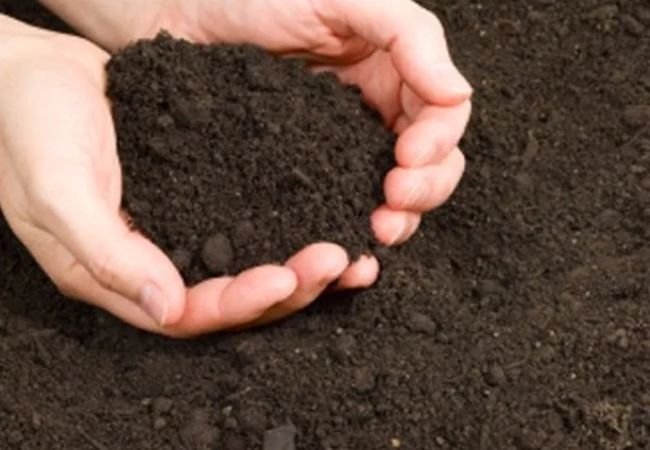Screened topsoil is high-quality soil that has been filtered to remove debris, rocks, and large organic matter, resulting in a uniform texture ideal for gardening and landscaping. It’s rich in nutrients, promotes healthy plant growth and improves soil structure and drainage. Screened topsoil is commonly used for creating new garden beds, leveling lawns and amending existing soil.
As a soil scientist and horticulturist with over two decades of experience, I’m excited to share my knowledge about screened topsoil and its crucial role in successful gardening and landscaping projects. Whether you’re a seasoned gardener or a landscaping novice, understanding screened topsoil can significantly improve your results.
What is Screened Topsoil?

Definition and Process
Screened topsoil is the upper layer of soil that has been mechanically sifted or ‘screened’ to remove:
- Rocks and stones
- Large organic debris
- Roots and twigs
The screening process results in a consistent, fine-textured soil ideal for various applications.
Composition
Typical components of high-quality screened topsoil include:
- Sand
- Silt
- Clay
- Organic matter
The exact ratio can vary depending on the source and intended use.
For more information on soil composition, visit the USDA Natural Resources Conservation Service’s soil education page.
Benefits of Using Screened Topsoil
- Improved Soil Structure
- Enhanced Drainage
- Better Nutrient Retention
- Easier Root Penetration
- Reduced Weed Presence
- Uniform Appearance
Types of Screened Topsoil
Based on Texture
- Sandy Loam
- Clay Loam
- Silt Loam
Based on Organic Content
- Standard Topsoil (low organic content)
- Enriched Topsoil (higher organic content)
For detailed soil classifications, check the USDA Soil Taxonomy guide.
Choosing the Right Screened Topsoil
Consider these factors when selecting screened topsoil:
- Intended Use (e.g., lawn, garden beds, raised planters)
- Existing Soil Composition
- Plant Types
- Local Climate
Applications of Screened Topsoil
Creating New Garden Beds
- Remove existing vegetation
- Add 4-6 inches of screened topsoil
- Mix with existing soil if possible
- Level and prepare for planting
Lawn Establishment and Repair
- Spread 2-3 inches of topsoil
- Grade and level
- Seed or lay sod
Raised Beds and Containers
- Fill raised beds with a mix of screened topsoil and compost
- Use for container gardening, mixed with potting soil
Soil Amendment
- Spread 2-3 inches over existing soil
- Till or mix into the top 6-8 inches of soil
For more on soil amendment techniques, visit the Cooperative Extension System’s gardening resources.
How to Use Screened Topsoil
Calculating Quantity Needed
Use this formula: Length (ft) x Width (ft) x Depth (ft) ÷ 27 = Cubic Yards
Application Tips
- Avoid working with wet soil
- Use proper tools (rake, shovel, wheelbarrow)
- Wear gloves and protective clothing
- Avoid compaction by not walking on freshly applied soil
Enhancing Screened Topsoil
To further improve your screened topsoil:
- Add Organic Matter
- Compost
- Well-rotted manure
- Leaf mold
- Incorporate Amendments
- Lime (to raise pH)
- Sulfur (to lower pH)
- Gypsum (to improve structure in clay soils)
- Use Fertilizers
- Slow-release granular fertilizers
- Organic options like bone meal or fish emulsion
For soil testing and amendment recommendations, contact your local Cooperative Extension office. Find your local office through the USDA’s Extension office locator.
Environmental Considerations
When using screened topsoil, consider:
- Source: Choose suppliers who practice sustainable harvesting
- Transportation: Opt for local sources to reduce carbon footprint
- Erosion Control: Use erosion control measures when applying on slopes
- Water Conservation: Incorporate organic matter to improve water retention
Potential Issues and Solutions
- Compaction
- Solution: Aerate regularly and avoid working with wet soil
- Nutrient Depletion
- Solution: Regularly add organic matter and fertilize as needed
- pH Imbalance
- Solution: Test soil pH annually and amend accordingly
- Drainage Problems
- Solution: Improve drainage with organic matter or consider installing drainage systems
Screened topsoil is a valuable resource for gardeners and landscapers alike. Its uniform texture, nutrient content, and versatility make it an excellent choice for a wide range of applications. By understanding its properties and proper use, you can significantly enhance the health and appearance of your gardens and landscapes.
Remember, while screened topsoil provides an excellent foundation, successful gardening also depends on proper plant selection, regular maintenance, and attentive care. Whether you’re establishing a new lawn, creating garden beds, or amending existing soil, screened topsoil can help you achieve the lush, healthy landscape you desire.
For more information on soil health and management, visit the Soil Science Society of America’s education page.
For more gardening tips and plant care guides, visit usagardenhub.com.







3 Comments on “Screened Topsoil : The Essential Guide for Gardeners and Landscapers (2024)”